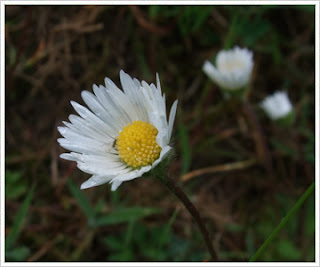Bellis perennis
General - The Daisy is a very common lawn weed, easily recognised by its distinct yellow and white flower.
This perennial weed which spreads via rhizomes and seed is at home on all types of
lawn and its low growing rosette form allows it to tolerate close mowing.
Leaves - The leaves which form a flat rosette are spoon (oval) shaped and the edges can be scalloped.
Flowers - The Daisy has a very recognisable flower, white petals (although in some cases the petals can be a pinky red colour) with yellow centers.
The flowers are bourn on long stalks and
can be seen from March to November.
Roots - Daisies have a strong tap root with rhizomes which allow it to adapt to all types of conditions.
Habitat - Daisies can thrive in all types of conditions especially moist, nutrient deficient soils.
Cultural Control - Hand weed ensuring that all of the root is removed. Maintain the lawn with good lawn care practices that encourage a healthy sward which in turn will discourage weeds.
Chemical Control - Chemical control should only be used as a last resort to control
weeds. If possible spot treat the lawn if the weeds are localised, only treat the whole lawn if it is suffering from weeds.
Leaves - The leaves which form a flat rosette are spoon (oval) shaped and the edges can be scalloped.
Flowers - The Daisy has a very recognisable flower, white petals (although in some cases the petals can be a pinky red colour) with yellow centers.
Roots - Daisies have a strong tap root with rhizomes which allow it to adapt to all types of conditions.
Habitat - Daisies can thrive in all types of conditions especially moist, nutrient deficient soils.
Cultural Control - Hand weed ensuring that all of the root is removed. Maintain the lawn with good lawn care practices that encourage a healthy sward which in turn will discourage weeds.
|
|





















0 comments:
Post a Comment